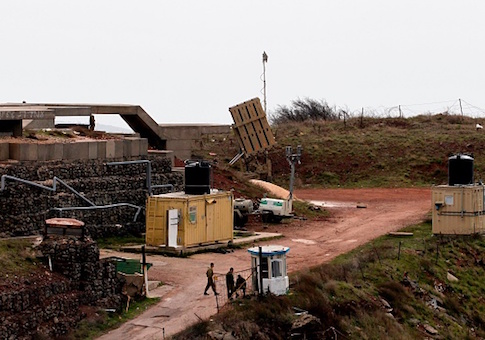JERUSALEM—A retired Israeli general said over the weekend that Iranian General Qassem Soleimani, commander of the al Quds force, an arm Iran's Revolutionary Guards, "plans from the end," following the downing of an Israeli F-16.
Gen. Moshe (Chico) Cohen (ret.) was referring to military activity beyond Iran's borders.
Cohen implied that the Iranian drone that penetrated Israeli territory before dawn Saturday before being shot down was an opening move towards the end game Soleimani was preparing for.
When the terms of nuclear arms deal with Iran wind down in about a decade, Cohen told Israel’s Channel 10, Iran would rush to produce nuclear weapons. The Iranian general wants to have forces in place around Israel by then, said Cohen, to prevent the Israeli air force from taking off to attack Iran’s nuclear facilities. According to published reports, Israel had indeed prepared for such an attack before the international community won suspension of Iran’s nuclear weapons program in return for the lifting of economic sanctions against Tehran.
Some Israeli analysts have suggested that the dispatch of the Iranian drone was a coordinated Iranian-Syrian trap aimed at eliciting an Israeli counter strike for which Syrian anti-aircraft units, massed across Israel’s border, were prepared. Israeli officials say that the drone had been monitored from the moment it was sent aloft from Palmyra, some 300 miles from Israel, despite its stealth features. Israel permitted the drone to cross its border, in order to be able to prove Iranian penetration of Israeli airspace, and to examine it. Although Israeli warplanes were in the air, an Apache helicopter was assigned to bring the drone down without destroying it.
The warplanes reached Palmyra and destroyed the command trailer from which the drone had been sent aloft. It is not known whether any of Gen. Soleimani’s men were inside it at the time.
One of the Israeli F-16s returning from the Palmyra raid was shot down as it crossed the border into Israel by a Syrian missile. The two-man crew parachuted safely. Israeli press reports suggest that the pilot was flying at a higher altitude than he was supposed to. In decades of cross-border attacks, Israeli aircraft have shown an almost unerring ability to avoid ground-to-air missiles through electronic shields and tactical maneuver.
In reaction to the downing, Israel sent swarms of warplanes against the Syrian batteries, destroying, according to Israeli press reports, more than half of Syria’s anti-aircraft defenses. These losses, however, are expected to be quickly replaced by Syria’s new patron, Russia. Several Iranian targets inside Syria, were also reportedly hit, but their nature has not been specified, nor have Iranian casualties been reported. Tehran maintains that their drone, a copy of an advanced American drone forced down over Iran in 2011, had not been dispatched into Israel but to survey the area in southern Syria abutting the Golan heights where jihadi forces are operating against the government of Bashar al-Assad.
Israeli officials say that Israel will continue to operate in Syria against Iranian-made precision rockets bound for Hezbollah in Lebanon.
